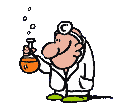<div></div><div id="QUOTEHEAD">QUOTE</div><div id="QUOTE">Would those, ah, recruitment and activation strategies by chance maybe...increase ATP turnover?
Sure...</div>
I'm going to say no on this, that ATP turnover is tied to tension (which makes sense since ATP turnover in the contraction process is related to how many bridges are actually linking and re-linking), even fatigue seems to be proportional with tension, not stimulation frequency.
<div></div><div id="QUOTEHEAD">QUOTE</div><div id="QUOTE">Tension-time index, fatigue, and energetics in isolated rat diaphragm: a new experimental model
Paul F. Klawitter1 and Thomas L. Clanton
The tension-time index (TTI) has been used to estimate mechanical load, energy utilization, blood flow, and susceptibility to fatigue in contracting muscle. The TTI can be defined, for a rhythmically contracting muscle, as the product of average force development divided by maximum tetanic force times duty cycle [contraction time ÷ (contraction + relaxation time)]. In this study, the TTI concept was applied to isolated diaphragm via a method that allowed TTI to be clamped at a predetermined value.
The hypothesis tested was that, at constant TTI, muscle energetics and the extent of fatigue would vary with stimulation frequency. Isolated diaphragm strips were stimulated at 25, 50, 75, or 100 Hz for 4 min, one per second. Duty cycle was continuously adjusted to maintain TTI at 0.07, which was near the highest TTI tolerated for 4 min, at 20-Hz stimulation. At the end of the fatigue run, muscles were either immediately frozen for determination ATP, creatine, and creatine phosphate concentrations (n = 6) or stimulated for evaluation of low- and high-frequency fatigue (n = 5).
Results demonstrated no difference in the extent of fatigue or in the final ATP and creatine phosphate concentrations between groups. Large within-run increases in duty cycle were required at low stimulation frequencies, but only small increases were required at the highest frequencies. The results demonstrate that, at a constant TTI, similar fatigue properties predominate at all stimulation frequencies with no clear distinction between high- and low-frequency fatigue. The method of clamping TTI during fatigue may be useful for evaluating energetics and contractile function between treatment groups in isolated muscle when treatment influences baseline contractile characteristics.</div>
Larger view
http://jap.physiology.org/content....03.jpeg
Also,Hypoxia, doesn't appear to increase ATP turnover, rather it lessens.
<div></div><div id="QUOTEHEAD">QUOTE</div><div id="QUOTE">Modeling the effects of hypoxia on ATP turnover in exercising muscle
P. G. Arthur, M. C. Hogan, D. E. Bebout, P. D. Wagner and P. W. Hochachka
Department of Zoology, University of British Columbia, Vancouver, Canada.
Most models of metabolic control concentrate on the regulation of ATP production and largely ignore the regulation of ATP demand. We describe a model, based on the results of Hogan et al. (J. Appl. Physiol. 73: 728-736, 1992), that incorporates the effects of ATP demand. The model is developed from the premise that a unique set of intracellular conditions can be measured at each level of ATP turnover and that this relationship is best described by energetic state. Current concepts suggest that cells are capable of maintaining oxygen consumption in the face of declines in the concentration of oxygen through compensatory changes in cellular metabolites.
We show that these compensatory changes can cause significant declines in ATP demand and result in a decline in oxygen consumption and ATP turnover. Furthermore we find that hypoxia does not directly affect the rate of anaerobic ATP synthesis and associated lactate production. Rather, lactate production appears to be related to energetic state, whatever the PO2. The model is used to describe the interaction between ATP demand and ATP supply in determining final ATP turnover</div>



